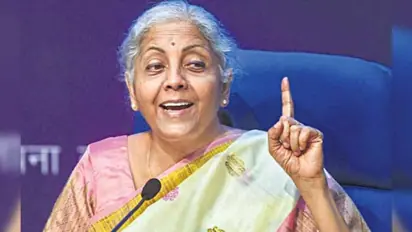Interim Budget 2024: From capital expenditure to fiscal deficit - 5 key things to watch out for

Synopsis
As India eagerly awaits the Interim Budget 2024, these focus areas underscore the government's priorities in addressing economic challenges and fostering growth.
In the lead-up to the Interim Budget 2024, scheduled to be presented by Union Finance Minister Nirmala Sitharaman on February 1, market players are speculating on crucial aspects that could drive economic growth. While the finance minister has ruled out any "spectacular announcement" in her sixth budget, investors and market observers are expecting significant developments. Sitharaman highlighted that the February 1 budget would essentially be a vote on account, with the primary aim of meeting government expenditure until a new government assumes office.
A comprehensive Budget for the financial year 2024-25 is expected to be presented in July by the new government elected following the April-May general elections.
Also read: Interim Budget 2024 Expectations: Pharma and Healthcare sectors seek bold policy moves
Here are the five key areas likely to be the focal points of the Interim Budget:
1. Capital Expenditure: The government is expected to sustain its emphasis on increasing capital expenditure, particularly in the infrastructure sector, to stimulate economic growth. ICRA's pre-Budget expectations suggest a projected capex of Rs 10.2 lakh crore in FY25, with a relatively moderate year-on-year expansion of around 10 percent compared to the robust growth seen in the post-COVID years.
2. Jobs Creation: To address job creation in the rural sector, the government may introduce incentives to boost investment in rural infrastructure and potentially extend production-linked incentive (PLI) schemes to sectors like chemicals and services. Deloitte suggests higher spending on rural infrastructure and expanding the scope of PLI schemes to stimulate manufacturing demand.
3. Fiscal Deficit: Despite electoral pressures, Sitharaman may consider a further reduction in fiscal deficit to 5.3 percent of India's GDP in the upcoming budget. BofA Securities anticipates the Centre's fiscal deficit to consolidate further to 5.3 percent of GDP, meeting the FY24 commitment to reduce it to 5.9 percent.
4. Social Sector Schemes: The Union government might allocate increased funds for social sector schemes in the interim budget, given the buoyancy in income and corporate tax collections, exceeding budget estimates by approximately Rs 1 lakh crore. Enhanced tax buoyancy is expected to provide the government with additional funds for social sector initiatives.
5. Consumption: Efforts to stimulate the agricultural economy may involve measures announced in the budget to boost consumption demand. With agriculture sector growth expected to decelerate, the finance minister may unveil measures to bolster consumption in the sector.
As India eagerly awaits the Interim Budget, these focus areas underscore the government's priorities in addressing economic challenges and fostering growth. The announcements on February 1 will be closely watched for their potential impact on various sectors and the overall trajectory of India's economic recovery.
Stay updated with all the latest Business News, including market trends, Share Market News, stock updates, taxation, IPOs, banking, finance, real estate, savings, and investments. Track daily Gold Price changes, updates on DA Hike, and the latest developments on the 8th Pay Commission. Get in-depth analysis, expert opinions, and real-time updates to make informed financial decisions. Download the Asianet News Official App from the Android Play Store and iPhone App Store to stay ahead in business.